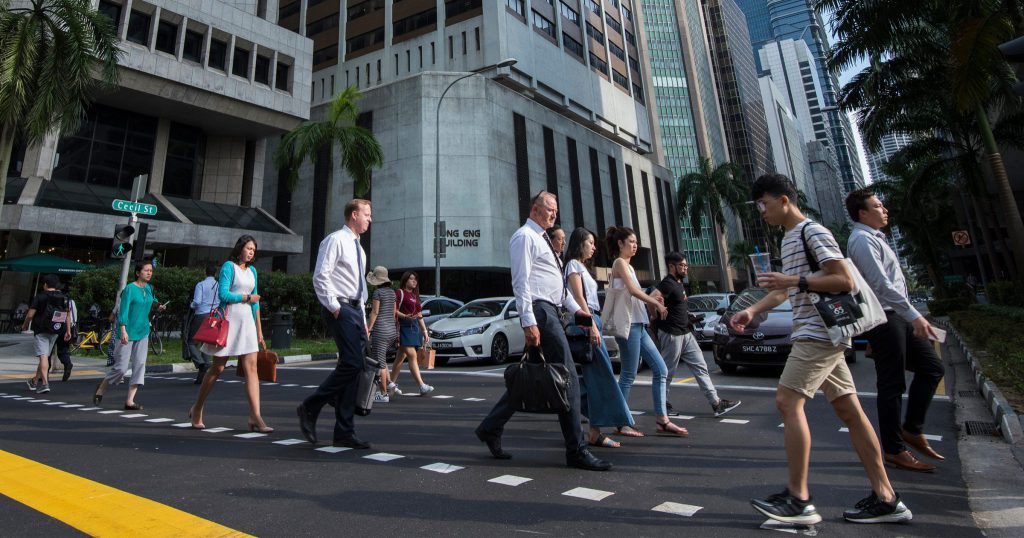The Covid-19 pandemic has revealed the opportunities that lie in Singapore’s e-commerce sector. Most retailers have realised that going digital is one of the best ways to reach their customer base, and have developed an e-commerce strategy.
Singapore and the world has seen an e-commerce boom, with consumers purchasing everything from groceries to household appliances online. According to Statista, revenue in the e-commerce market is projected to reach US$2,793 million (S$3762.67 million) in 2021.
Furthermore, Singapore is one of the top five Southeast Asian markets leading the charge when it comes to e-commerce market growth.
Due to the e-commerce boom, it is reasonable for many to assume that e-commerce sellers are raking in big bucks but Atsell co-founder and CEO Jacob Chee deems this as a mere misconception.
The Singapore-based company offers end-to-end services, consulting, and automation solutions to companies that are looking to supercharge their e-commerce sales.

When working in an e-commerce startup prior to starting Atsell, Jacob witnessed firsthand the challenges sellers face when transiting their businesses online.
For example, to move their entire catalogue online, business owners need to take professional product photos, create search-optimised listings, handle enquiries, orders, delivery and reviews.
On the other hand, the rise of online “e-commerce gurus” who preach the misconception that running an e-commerce business is easy has only deepened the misconception.
He went on to start up e-commerce enabler Atsell, which basically helps to make a difference in helping businesses sell better.
It currently operates in two countries, but plans to expand to the Philippines this year.
The challenges of running an e-commerce store are aplenty

According to Jacob, the profit margins of many e-commerce sellers in Singapore are squeezed, and many local companies can only “just get by” from e-commerce.
Here is the breakdown of some of the fees and costs incurred by e-commerce sellers:
- Platform transaction fees of two to 12 per cent, depending on which platform
- Marketing fees of five per cent of sales or more, depending on sellers’ budget
- Shipping fees of S$1.50 to S$8, depending on weight
- Warehouse fees of S$500 to S$1000
- S$5,000 to S$8,000 for headcount, if there is a dedicated e-commerce team
Some other intangible costs include resolving customer complaints, attending to customer enquiries around the clock, dealing with fraudulent activities, and fulfilling orders seven days a week.
Even though Singapore leads the pack when it comes to e-commerce market growth, the domestic market is small. Sellers therefore need to go beyond Singapore’s shores and explore cross-border e-commerce to countries like Malaysia, Indonesia, the Philippines and Vietnam in order to truly flourish.
Furthermore, competition from overseas sellers is rampant. Globalisation offers convenience and choice for consumers, but it also hinders the growth of local sellers who have to find ways to differentiate.
When was the last time you remember the name of the store or seller you bought from on Shopee or Lazada? Thousands of new stores are set up on marketplaces daily. It is difficult to create brand differentiation and recall on these platforms.
Jacob Chee, Atsell CEO and co-founder
Hence, Jacob shared that a couple of best practices that all sellers should carry out include having clear, relevant product listing titles, displaying high quality images, and having well-written product descriptions.
He added that performing well on e-commerce requires a snowball effect — gaining momentum and continuous sales is extremely important to doing well over an extended period of time.
Are e-commerce sellers really thriving?

The e-commerce boom has led to increased traffic, online footfall, and a greater volume of sales. Individual sellers thus experience a rise in revenue, even if they only have a small percentage of the e-commerce pie.
On e-commerce platforms, customers are seller-agnostic and are brought in via the marketing efforts of the platform, not the sellers themselves. However, Jacob tells Vulcan Post that marketplaces will “always favour consumers over sellers, and it is evident in the platform policies.”
For example, platforms engage third-party logistics partners to provide fulfilment to sellers. After sellers hand off their items to third parties, they have no control over delivery issues failed delivery, lost parcels, or damaged goods.
In such cases, the sellers will be left to face the brunt of the consumers’ complaints, and could face negative ratings due to no fault of their own.
While there is a review resolution system in place, it is tedious to submit evidence and have it resolved. In most cases, sellers still have to absorb the cost of damaged products and returned items. While
Although platforms have invested heavily to detect copyright infringements, it is not uncommon to see duplicate listings by overseas sellers. In extreme cases, there are even entire stores being duplicated.
Finally, even though income statements are available to sellers, they are not always intuitive. Sellers have to account for platform fees, rebates and charges, and it is difficult to figure out the profit margin at times, said Jacob.
This then raises the question: how much are e-commerce sellers actually earning?
In general, e-commerce marketplaces benefit sellers with lean operations. Smaller merchants also have the ability to operate more flexibly within the marketplaces guidelines, especially in areas like shipping and returns.
Nevertheless, it is evident that even though e-commerce has boomed greatly in the past year, individual sellers still face a whole host of challenges, and the spike in e-commerce sales may not necessarily translate to profits for merchants.
Featured Image Credit: SBR










